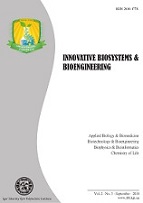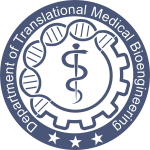Origanum vulgare L. Cuttings Rhizogenesis in Microclonal Reproduction in Vitro
DOI:
https://doi.org/10.20535/ibb.2020.4.1.192191Keywords:
Oregano, Culture in vitro, Nutrient media, Cutting, Root system, Adaptation in soilAbstract
Background. Oregano (Origanum vulgare L.) is a valuable essential oil culture used in the pharmaceutical and food branches of industry as a source of biologically active substances. The optimization of microclonal propagation technology in vitro of this culture is considered topical for the development of the selection of oregano with a high content of essential oil and rapid multiplication of high-performance samples.
Objective. This article aims to study the conditions of cuttings' rooting of oregano samples, valuable in terms of breeding, obtained at the last stage of in vitro cutting.
Methods. Cuttings of eleven oregano genotypes obtained after the fourth cutting of the original maternal shoots were used as a material for the study of rhizogenesis in vitro. Roots formation and development of newly formed shoots were investigated by alteration of the carbohydrate and growth regulators composition in nutrient media for rhizogenesis. ½MS medium without growth regulators was used as a control medium. Experimental in growth regulator composition were MS-based media supplemented with one of the following components: indolylacetic acid (IAA) (2 mg/l), IAA (0.5 mg/l), indolylbutyric acid (IBA) (1 mg/l), IBA (0.5 mg/l), 0.5 mg/l IAA + 0.5 mg/l IBA. Sucrose (20 g/l) or glucose (20 g/l) was used as a carbon source. The influence of the composition of rhizogenesis media was estimated on the length of cuttings' root system, the length of newly formed shoots and the survival of regenerated plants after transfer to soil.
Results. Formation of the oregano root system and newly formed shoots at a frequency of 100% occurred for all the studied genotypes and versions of media while the survival of regenerated plants in soil as a whole in the experiment for use of sucrose as a source of carbon was 63.82 ± 11.83% and for glucose 66.45 ± 11.62%. However, depending on the genotype and composition of the nutrient media, there was a variation in root system length, length of newly formed shoots and in the survival of regenerated plants in soil. A comparison of the results of rooting with sucrose or glucose in the medium for rhizogenesis did not reveal a significant difference between these compounds, but there was a tendency for better growth of the root system when using sucrose. A significant positive correlation was established between the cuttings' root system length and the survival of regenerated plants after transfer to soil (for sucrose r = 0.57, for glucose r = 0.51, r0.05 = 0.24) and no correlation was proved between the newly formed shoots length and the survival of regenerated plants in soil (for sucrose r = –0.21, for glucose r = –0.03, r0.05 = 0.24).
Conclusions. It is proved that the influence of carbohydrate composition and type and concentration of growth regulators in the nutrient medium on the oregano cuttings' rhizogenesis obtained during the last cycle of microclonal propagation in vitro is genotype-specific. ½MS medium supplemented with 2 mg/l of indolylacetic acid, with sucrose (20 g/l) as a carbon source, proved to be most effective for root development in vitro and cuttings' adaptation in the soil for most of the genotypes studied.References
Skoufogianni E, Solomou AD, Danalatos NG. Ecology, Cultivation and Utilization of the Aromatic Greek Oregano (Origanum vulgare L.): A Review. Notulae Botanicae Horti Agrobotanici Cluj-Napoca. 2019;47(3):545-52. DOI: 10.15835/nbha47311296
Spyridopoulou K, Fitsiou E, Bouloukosta E, Tiptiri-Kourpeti A, Vamvakias M, Oreopoulou A, et al. Extraction, Chemical Composition, and Anticancer Potential of Origanum onites L. Essential Oil. Molecules. 2019;24(14):2612. DOI: 10.3390/molecules24142612
Ramadan MF, Elbanna K. The oil of oregano (Origanum vulgare). INFORM International News on Fats, Oils, and Related Materials. 2017;28(3):18-20. DOI: 10.21748/inform.03.2017.18
Kosakowska O, Czupa W. Morphological and chemical variability of common oregano (Origanum vulgare L. subsp. vulgare) occurring in eastern Poland. Herba Polonica. 2018;64(1):11-21. DOI: 10.2478/hepo-2018-0001
George EF, Hall MA, De Klerk G-J. Micropropagation: Uses and Methods. In: Plant Propagation by Tissue Culture. Dordrecht: Springer Netherlands; 2008, pp. 29-64. DOI: 10.1007/978-1-4020-5005-3_2
Menezes NMC, Martins WF, Longhi DA, de Aragão GMF. Modeling the effect of oregano essential oil on shelf-life extension of vacuum-packed cooked sliced ham. Meat Science. 2018;139:113-9. DOI: 10.1016/j.meatsci.2018.01.017
Parreira DS, Alcántara-de la Cruz R, Leite GLD, de Souza Ramalho F, Zanuncio JC, Serrão JE. Quantifying the harmful potential of ten essential oils on immature Trichogramma pretiosum stages. Chemosphere. 2018;199:670-5. DOI: 10.1016/j.chemosphere.2018.02.083
Khosravi AR, Sharifzadeh A, Nikaein D, Almaie Z, Gandomi Nasrabadi H. Chemical composition, antioxidant activity and antifungal effects of five Iranian essential oils against Candida strains isolated from urine samples. Journal de Mycologie Médicale. 2018;28(2):355-60. DOI: 10.1016/j.mycmed.2018.01.005
Elshafie H, Armentano M, Carmosino M, Bufo S, De Feo V, Camele I. Cytotoxic Activity of Origanum Vulgare L. on Hepatocellular Carcinoma cell Line HepG2 and Evaluation of its Biological Activity. Molecules. 2017;22(9):1435. DOI: 10.3390/molecules22091435
Olijhoek DW, Hellwing ALF, Grevsen K, Haveman LS, Chowdhury MR, Løvendahl P, et al. Effect of dried oregano (Origanum vulgare L.) plant material in feed on methane production, rumen fermentation, nutrient digestibility, and milk fatty acid composition in dairy cows. Journal of Dairy Science. 2019;102(11):9902-18. DOI: 10.3168/jds.2019-16329
Prasanna R, Ashraf EA, Essam MA. Chamomile and oregano extracts synergistically exhibit antihyperglycemic, antihyperlipidemic, and renal protective effects in alloxan-induced diabetic rats. Canadian Journal of Physiology and Pharmacology. 2017;95(1):84-92. DOI: 10.1139/cjpp-2016-0189
Han X, Parker TL. Anti-inflammatory, tissue remodeling, immunomodulatory, and anticancer activities of oregano (Origanum vulgare) essential oil in a human skin disease model. Biochimie Open. 2017;4:73-7. DOI: 10.1016/j.biopen.2017.02.005
Wei J, Huang Q, Bai F, Lin J, Nie J, Lu S, et al. Didymin induces apoptosis through mitochondrial dysfunction and up-regulation of RKIP in human hepatoma cells. Chemico-Biological Interactions. 2017;261:118-26. DOI: 10.1016/j.cbi.2016.11.026
Forte C, Branciari R, Pacetti D, Miraglia D, Ranucci D, Acuti G, et al. Dietary oregano (Origanum vulgare L.) aqueous extract improves oxidative stability and consumer acceptance of meat enriched with CLA and n-3 PUFA in broilers. Poultry Science. 2018;97(5):1774-85. DOI: 10.3382/ps/pex452
Fokina A, Satarova T, Derkach K. The Effect of the Mineral and Carbohydrate Composition of the Nutrient Medium on the Efficiency of Microclonal Propagation of Origanum Vulgare L. In Vitro. Innovative Biosystems and Bioengineering. 2019;3(3):176-84. DOI: 10.20535/ibb.2019.3.3.174795
Kalinin F, Sarnatskaya V, Polishchuk V. Methods of tissue culture in plant physiology and biochemistry. Kyiv: Naukova dumka; 1980, 488 р.
Fokina AV, Satarova TM, Smetanin VT, Kucenko NI. Optimization of microclonal propagation in vitro of oregano (Origanum vulgare). Biosystems Diversity. 2018;26(2):98-102. DOI: 10.15421/011815
Murashige T, Skoog F. A Revised Medium for Rapid Growth and Bio Assays with Tobacco Tissue Cultures. Physiologia Plantarum. 1962;15(3):473-97. DOI: 10.1111/j.1399-3054.1962.tb08052.x
Weaver KF, Morales V, Dunn SL, Godde K, Weaver PF. An Introduction to Statistical Analysis in Research: With Applications in the Biological and Life Sciences. Wiley; 2017, 594 р. DOI: 10.1002/9781119454205
Bondarev N, Reshetnyak O, Bondareva T, Il'in M, Nosov A. Impact of cultivation factors in vitro on the growth and the biosynthesis of steviol glycosides in Stevia rebaudiana cell cultures. Physiology and Molecular Biology of Plants. 2019;25(4):1091-6. DOI: 10.1007/s12298-019-00680-6
Çakmak E, Uncuoğlu AA, Aydın Y. Evaluation of in vitro genotoxic effects induced by in vitro anther culture conditions in sunflower. Plant Signaling & Behavior. 2019;14(9):1633885. DOI: 10.1080/15592324.2019.1633885
Malik MQ, Mujib A, Gulzar B, Zafar N, Syeed R, Mamgain J, Ejaz B. Genome size analysis of field grown and somatic embryo regenerated plants in Allium sativum L. Journal of Applied Genetics. 2020;61(1):25-35. DOI: 10.1007/s13353-019-00536-5
Nakasha JJ, Sinniah UR, Kemat N, Mallappa KS. Induction, subculture cycle, and regeneration of callus in Safed musli (Chlorophytum borivilianum) using different types of phytohormones. Pharmacognosy Magazine. 2016;12(47s):S460-S464. DOI: 10.4103/0973-1296.191457
Derkach KV, Borysova VV, Maletskyi VO, Satarova TM. The ability of maize Lancaster inbreds to callusogenesis in vitro under varying environmental conditions. Factors in Experimental Evolution of Organisms. 2018;22:228-34. DOI: 10.7124/FEEO.v22.953
Iconomou-Petrovich GN, Nianiou-Obeidat I. Micropropagation of origanum Vulgare Subsp. hirtum (Mt. Taygetos). In: Progress in Botanical Research. Dordrecht: Springer Netherlands; 1998, pp. 509-12. DOI: 10.1007/978-94-011-5274-7_116
Gamborg OL, Murashige T, Thorpe TA, Vasil IK. Plant tissue culture media. In Vitro. 1976;12(7):473-8. DOI: 10.1007/BF02796489
Goleniowski ME, Flamarique C, Bima P. Micropropagation of oregano (Origanum vulgare×applii) from meristem tips. In Vitro Cellular & Developmental Biology - Plant. 2003;39(2):125-8. DOI: 10.1079/IVP2002361
Habibi P, Grossi de Sa MF, da Silva ALL, Makhzoum A, da Luz Costa J, Borghetti IA, Soccol CR. Efficient genetic transformation and regeneration system from hairy root of Origanum vulgare. Physiology and Molecular Biology of Plants. 2016;22(2):271-7. DOI: 10.1007/s12298-016-0354-2
El Beyrouthy M, Elian G, Abou Jaoudeh C, Chalak L. In Vitro Propagation of Origanum syriacum and Origanum ehrenbergii. Acta Horticulturae. 2015;1083:169-72. DOI: 10.17660/ActaHortic.2015.1083.19
Downloads
Published
How to Cite
Issue
Section
License
Copyright (c) 2020 The Author(s)

This work is licensed under a Creative Commons Attribution 4.0 International License.
The ownership of copyright remains with the Authors.
Authors may use their own material in other publications provided that the Journal is acknowledged as the original place of publication and National Technical University of Ukraine “Igor Sikorsky Kyiv Polytechnic Institute” as the Publisher.
Authors are reminded that it is their responsibility to comply with copyright laws. It is essential to ensure that no part of the text or illustrations have appeared or are due to appear in other publications, without prior permission from the copyright holder.
IBB articles are published under Creative Commons licence:- Authors retain copyright and grant the journal right of first publication with the work simultaneously licensed under CC BY 4.0 that allows others to share the work with an acknowledgement of the work's authorship and initial publication in this journal.
- Authors are able to enter into separate, additional contractual arrangements for the non-exclusive distribution of the journal's published version of the work (e.g., post it to an institutional repository or publish it in a book), with an acknowledgement of its initial publication in this journal.
- Authors are permitted and encouraged to post their work online (e.g., in institutional repositories or on their website) prior to and during the submission process, as it can lead to productive exchanges, as well as earlier and greater citation of published work.









